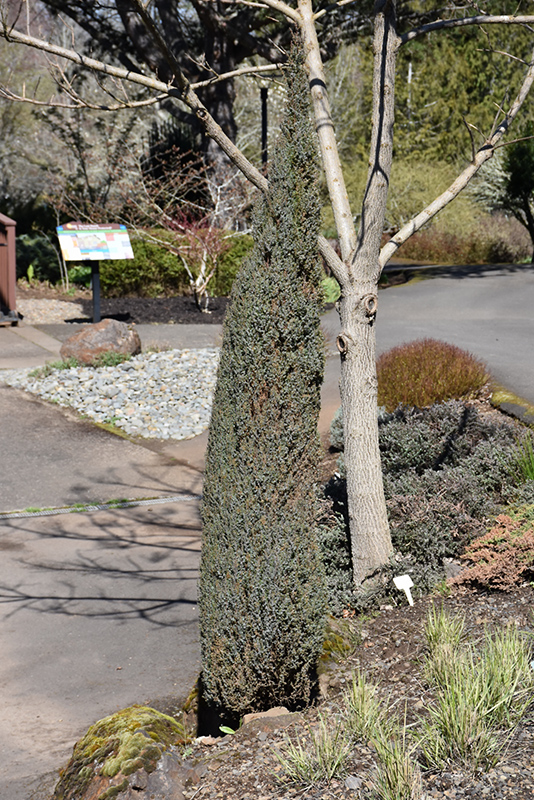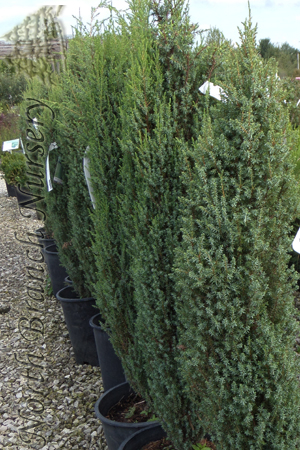Looking for a particular Plant? Try our Plant Finder Tool.
Compressa Juniper
Juniperus communis 'Compressa'
Height: 3 feet
Spread: 18 inches
Sunlight:
![]()
Hardiness Zone: 3a
Other Names: Dwarf Common Juniper
Description:
A rigidly narrow and upright accent evergreen for the garden, very compact, never growing more than a few feet tall, extremely fine foliage lends a soft texture; best used as a solitary accent, ideal as a rock garden feature
Ornamental Features
Compressa Juniper is a dwarf conifer which is primarily valued in the garden for its rigidly columnar form. It has attractive dark green foliage with silver stripes. The needles are highly ornamental and turn coppery-bronze in the fall, which persists throughout the winter.
Landscape Attributes
Compressa Juniper is a dense multi-stemmed evergreen shrub with a narrowly upright and columnar growth habit. It lends an extremely fine and delicate texture to the landscape composition which should be used to full effect.
This is a relatively low maintenance shrub, and is best pruned in late winter once the threat of extreme cold has passed. It has no significant negative characteristics.
Compressa Juniper is recommended for the following landscape applications;
- General Garden Use
Planting & Growing
Compressa Juniper will grow to be about 3 feet tall at maturity, with a spread of 18 inches. It tends to be a little leggy, with a typical clearance of 1 foot from the ground. It grows at a slow rate, and under ideal conditions can be expected to live for approximately 30 years.
This shrub should only be grown in full sunlight. It is very adaptable to both dry and moist growing conditions, but will not tolerate any standing water. It is considered to be drought-tolerant, and thus makes an ideal choice for a low-water garden or xeriscape application. It is not particular as to soil type or pH. It is highly tolerant of urban pollution and will even thrive in inner city environments. This is a selection of a native North American species.




